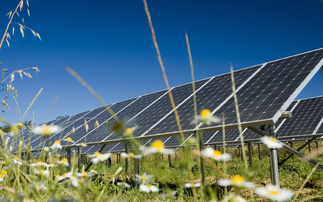The Future Homes Standard could be a game-changer for green buildings or it could be a drag on climate action - it is understandable that councils and business leaders are worried
The scars left by the government's 2015 decision to axe the Zero Carbon Homes Standard, just months before it came into effect, run deep. It was - along with the steep cuts to energy efficiency funding and the decision to shelve a £1bn CCS demonstration project that the embryonic sector still has not recovered from - arguably the most egregious and short-sighted green policy decision of the Cameron-era. It imploded investor and industry confidence and resulted in yet more poor-quality, inefficient homes being built - and all in the interests of bolstering profit margins for a handful of house-builders.
Consequently, when the dog days of the May administration featured the announcement of a new and improved Future Homes Standard there was a mixture of cautious optimism - 'at last' - and weary scepticism - 'here we go again'.
On the plus side, as the standard was originally pitched, the effective ban on gas grid connections for new build homes from 2025 is a big and important decarbonisation development. Last week's consultation on the proposals also pointed to a significant strengthening of energy efficiency standards and various mechanisms to boost demand for clean technologies. There is much to like here, and the industry duly responded in a broadly positive fashion.
However, as BusinessGreen's Madeleine Cuff has expertly documented over the past week those reasons for scepticism remain.
First up, the commitment to 'low carbon heating' could leave some wriggle room for the proposed ban on gas boilers and cookers. Given what happened in 2015 green groups are wary that expert lobbyists could turn that wriggle room into a u-turn.
Moreover, even with stronger standards there is the on-going scandal of the enforcement gap, which the government appears to have little interest in addressing.
And then there is the sting in the tail of the new proposals: the plan to strip local authorities of their power to impose building standards beyond the national rules.
As the STA documented yesterday, more than half of councils already make use of these powers to deliver greener and more efficient buildings. Crucially, many leading authorities, including London, intend to make much more use of them in the future to accelerate their net zero and climate emergency plans. Consequently, the London Mayor's Office told BusinessGreen this week that the government's plans were simply "unacceptable" as they stand.
The government counters that its new plans are so ambitious that regional variations will no longer be needed. In fact, they could inadvertently drive up the overall cost of decarbonisation by creating a patchwork of standards that undermines economies of scale and the emerging clean technologies and modular building models that will be critical to delivering a net zero building stock.
This is a fair point. The problem is it would gain a lot more traction if everyone trusted the government to deliver truly ambitious standards that ratchet upwards long into the future. And thanks to the zero carbon homes standard fiasco and the full spectrum detachment from observable reality that has defined so much of the Brexit spin-battle trust in the government among businesses and investors is at an historically low ebb.
Consequently, councils and others look to the California model where regional powers have acted as a major bulwark against President Trump's assault on environmental standards and cling tightly to the powers they have, fearing they may need them in the future if the UK is to drive a genuinely ambitious net zero transition.
Ministers will have to deliver a major charm offensive if they are to convince anyone that such fears aren't justified. They could start with unequivocally confirming that a new net zero-compatible Clean Growth Strategy is on the way soon and reaching out now to councils to seek a compromise on a Future Homes Standard which could provide a huge boost for the green economy and finally heal the scars of 2015.
A version of this article originally appeared in the BusinessGreen Overnight Briefing email, which is available to all BusinessGreen subscribers.










